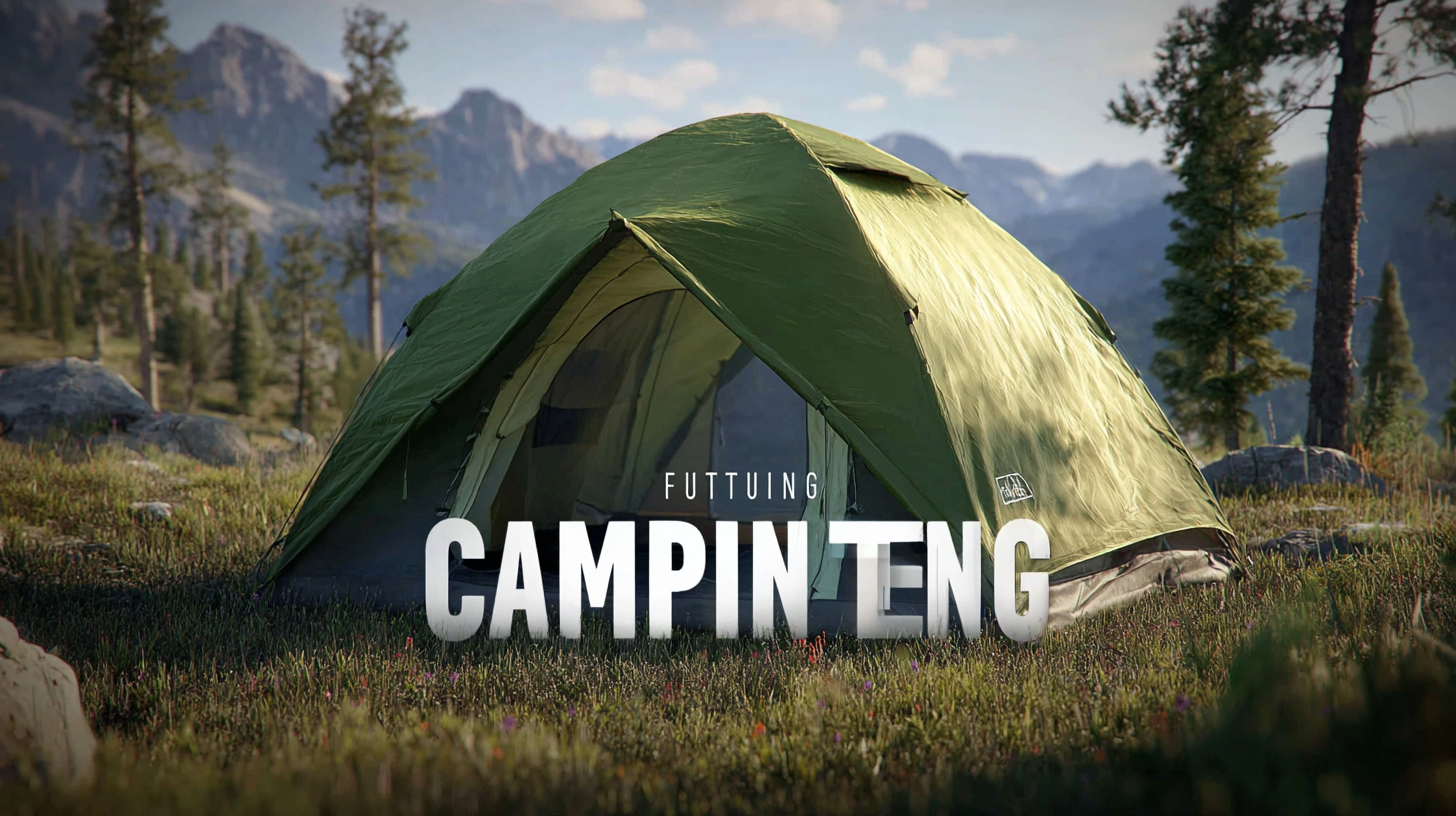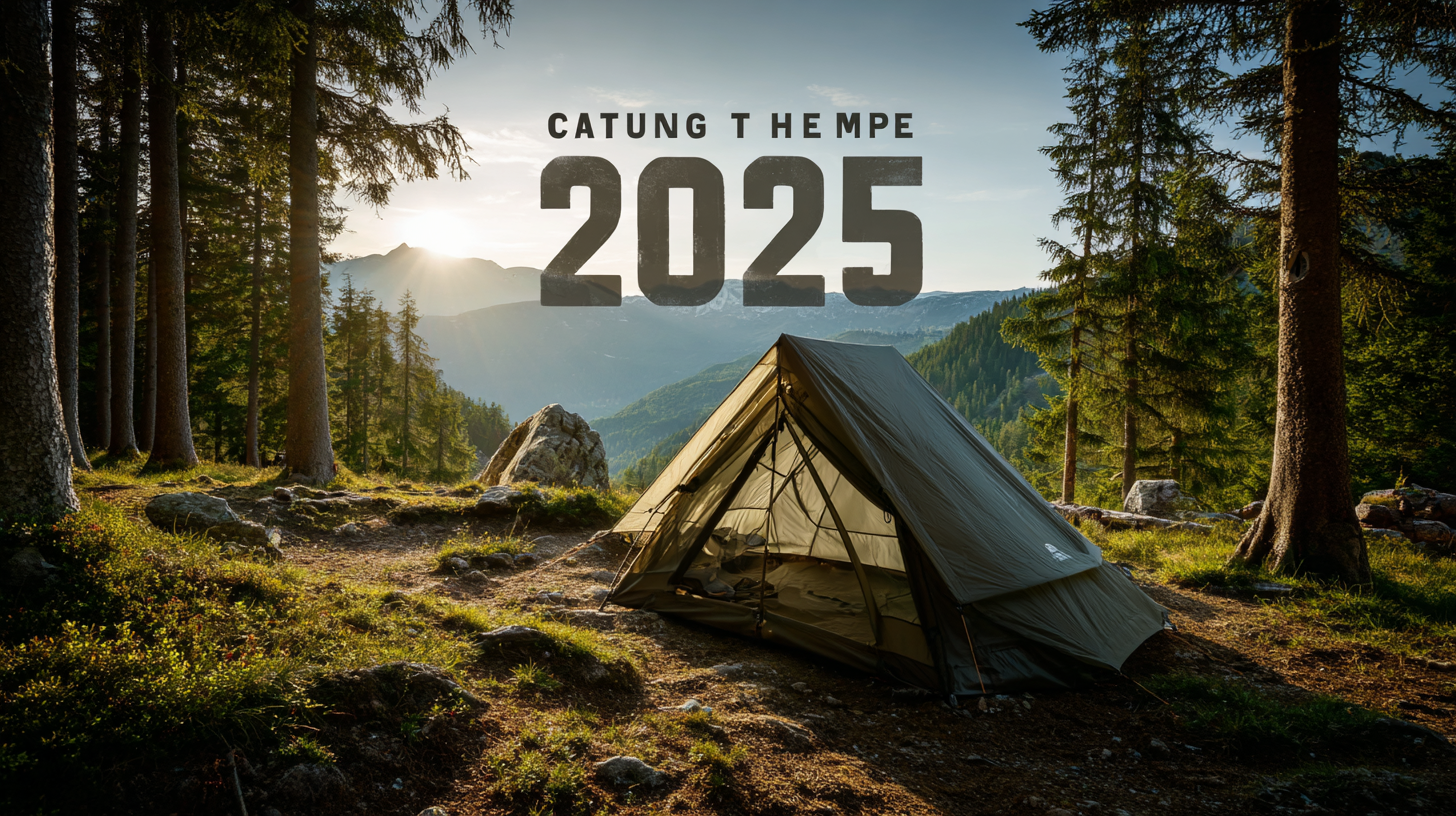Leave Your Message
- E-mail
- Whatsapp
As we look towards the future of outdoor adventures, the evolution of camping tent technology is set to redefine our camping experiences by 2025. Camping tents are no longer just basic shelters; they are becoming advanced structures equipped with innovative features that enhance comfort, durability, and convenience. In this tutorial, we will explore the emerging trends that are shaping the next generation of camping tents, ranging from smart material usage to eco-friendly designs and integrated technology. We'll also provide an essential features checklist to help campers identify what to look for when investing in a new tent. Whether you're a seasoned explorer or a casual camper, understanding these advancements will prepare you for your next outdoor escape, ensuring you enjoy the great outdoors with the utmost comfort and efficiency. Join us as we delve into the exciting future of camping tents and what you can expect in the years to come.

As camping continues to gain popularity, the evolution of tent technology is becoming more pronounced. In 2025, emerging materials are set to enhance durability and weather resistance, making camping experiences safer and more comfortable. One notable trend is the use of advanced synthetic fabrics, such as Dyneema and Spectra, which provide remarkable strength-to-weight ratios. These materials resist tears, offer excellent waterproof capabilities, and are often lighter than traditional options, enabling campers to carry their gear with greater ease.
In addition to high-performance fabrics, the integration of smart technologies will also play a crucial role in the future of camping tents. Coatings embedded with nano-technology can offer better water repellency and dirt resistance while ensuring breathability. Furthermore, tents equipped with solar-powered features and integrated sensors for weather monitoring will provide campers with real-time data, allowing them to adapt their experiences to changing conditions. As these innovations emerge, they will redefine the standards of durability and functionality, transforming the way outdoor enthusiasts engage with nature.

As we look toward 2025, the camp industry is poised for remarkable advancements in tent technology, focusing on innovative features that enhance comfort and convenience for outdoor enthusiasts. Modern camping tents are expected to integrate smart materials that adapt to weather conditions, ensuring better insulation and breathability. Imagine a tent that auto-adjusts its ventilation based on humidity or temperature, allowing campers to maintain an optimal environment, no matter the elements outside.
Another groundbreaking development is the inclusion of modular designs that enable customization and scalability. Campers will be able to expand their living space by adding sections or attaching storage units, similar to innovative camping vehicles that combine practicality and comfort. With features such as built-in solar panels for power supply, advanced lighting systems, and integrated storage solutions, these modern tents will transform the camping experience, making it more enjoyable and user-friendly. As technology continues to evolve, campers can look forward to an outdoor living experience that is both luxurious and functional, bridging the gap between nature and convenience.
As we look toward 2025, the future of camping tent technology is poised to be revolutionized by smart technology integration. A recent report from the Outdoor Industry Association indicates that 60% of campers are seeking more innovative features in their gear, highlighting a growing expectation for tents to offer enhanced connectivity and monitoring capabilities. Imagine tents equipped with smart sensors that notify users of temperature shifts, humidity levels, and even potential weather changes—all accessible via a mobile app. This transformation will not only improve the camping experience but also enhance safety and comfort in outdoor adventures.
When considering future tent purchases, it's essential to look for features that prioritize connectivity. Opt for tents that include built-in solar panels or battery packs to keep your devices charged. Additionally, look for models with IoT connectivity, allowing for real-time updates on environmental conditions. The integration of smart technology will make it easier for campers to stay connected while enjoying nature, which is increasingly valued by today's adventurers.
Tip: Before your next camping trip, test your tent's connectivity features at home. Ensure the app works seamlessly with your devices and that you’re familiar with how to access monitoring tools. This preparation will ensure a smoother, more enjoyable experience when you head into the wild.
This chart demonstrates the projected importance levels of various features in camping tent technology for 2025. Smart connectivity emerges as the most critical feature, followed by weather resistance and sustainability. Lightweight materials and ease of setup also remain significant in improving the overall camping experience.
When embarking on an adventure, selecting the right camping tent is crucial. With various types available—such as
dome tents, backpacking tents, and car camping tents—each offers
unique benefits tailored to different outdoor experiences. According to a recent report by the Outdoor Industry Association,
the demand for lightweight, durable tents has increased by
25% over the past three years, driven by the growing interest
in minimalist camping and long-distance hiking. Understanding these distinctions can enhance your overall outdoor
experience, ensuring you choose a tent that best suits your specific needs.
When assessing tent types, consider your adventure style and the conditions you'll face. Dome tents
are excellent for versatility and stability in various terrains, while backpacking tents prioritize
weight for easy transport. For family camping, car camping tents provide ample space and comfort.
Tips to remember: Always check the tent's weather resistance rating—look for a minimum of
3,000 mm for a reliable water column—as well as its
weight-to-space ratio to ensure an optimal experience without compromising on comfort. Additionally,
prioritizing ease of setup can save time
and frustration, especially after a long day on the trail.
As we approach 2025, advancements in camping tent technology are set to redefine outdoor experiences. When choosing a camping tent, it's essential to consider several critical features that align with future trends, ensuring durability, comfort, and ease of use. According to a report by the Outdoor Industry Association, 70% of campers prioritize lightweight materials that enhance portability without compromising protection from the elements. Look for tents made with high-strength, tear-resistant fabrics that also provide effective UV protection and weather resistance.
Ventilation is another crucial feature. Studies indicate that improper airflow can lead to condensation issues within tents, impacting overall comfort. In 2025, innovative designs incorporating adjustable mesh panels and multi-directional vents will become essential for maintaining a breathable environment. Additionally, consider integrated smart technology, like weather-responsive waterproofing and solar-powered charging ports, which are projected to be industry standards, as 65% of campers express interest in tech-enhanced gear. By prioritizing these essential features, campers can ensure their tent not only meets current needs but is also prepared for the evolving demands of outdoor adventures.

